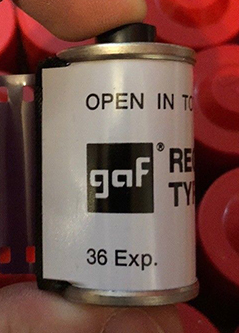I recently came across these, and bought some to experiment.
Photos courtesy of the seller
All the can reads is
"GAF Corporation. Open in total darkness. Recording Type 2005."
Unfortunately the internet doesn't seem to have much on this - I'd love to know what ISO, color or type of film it is before shooting it.



